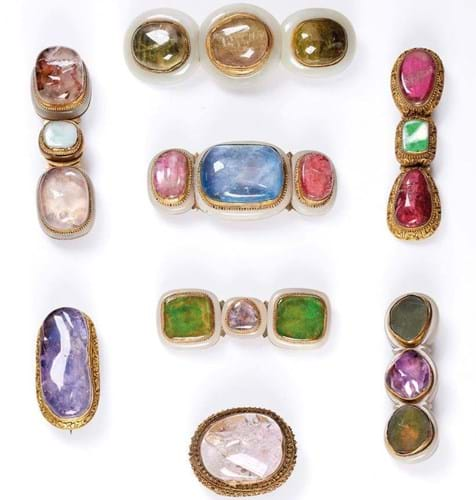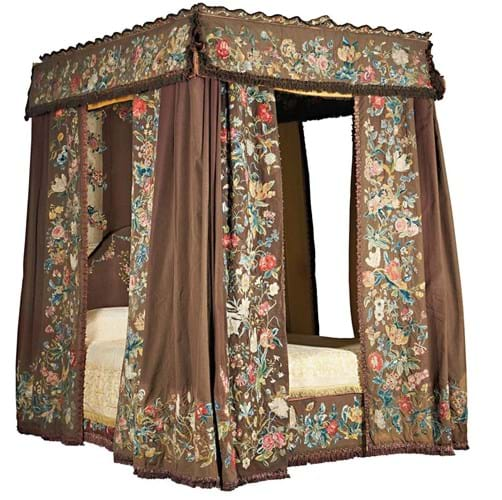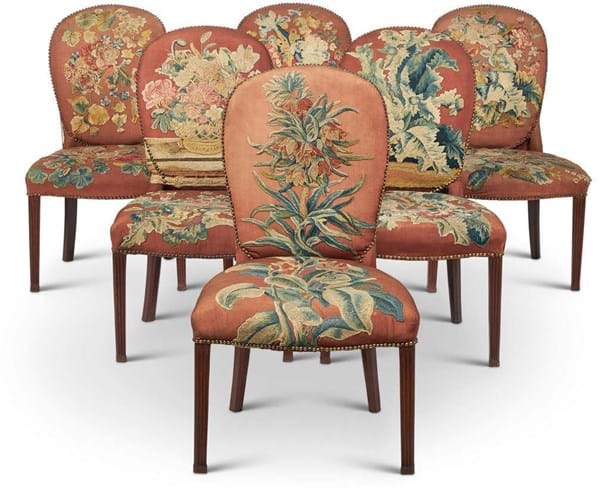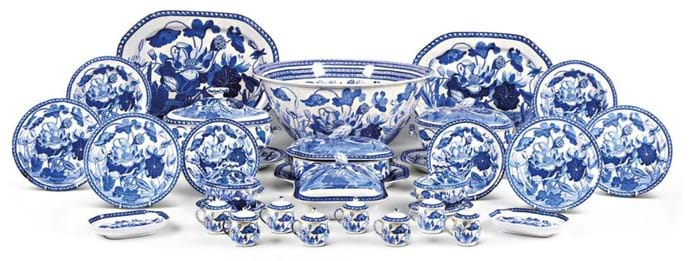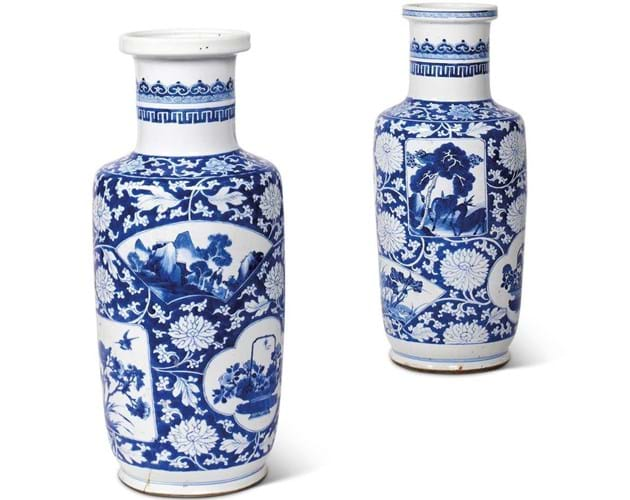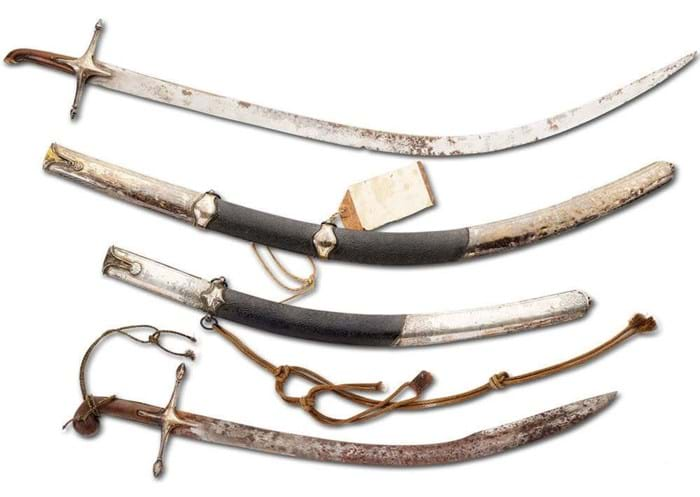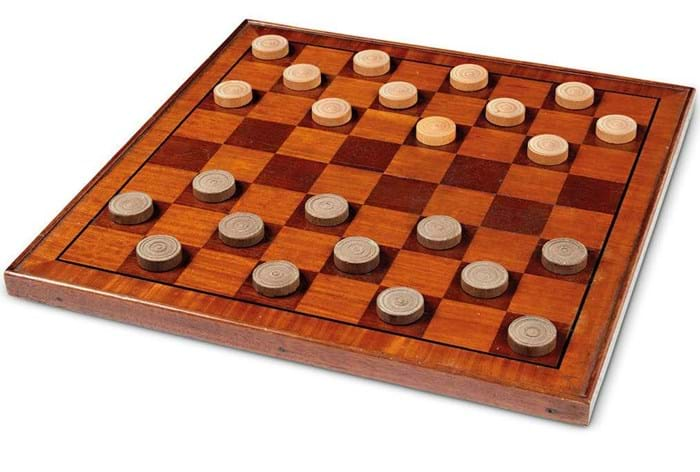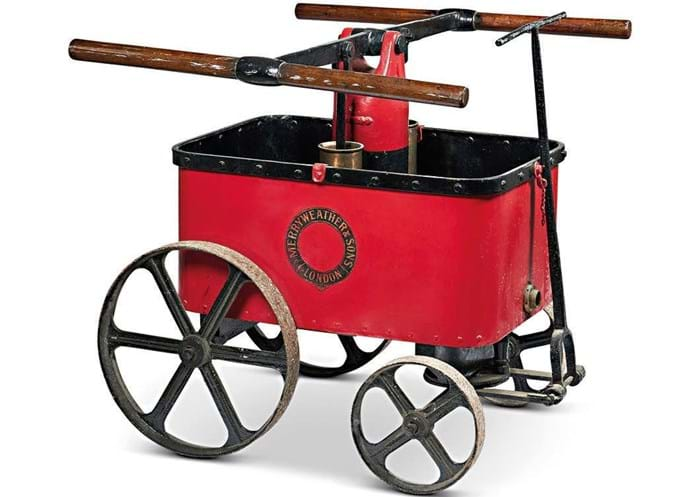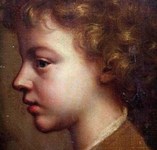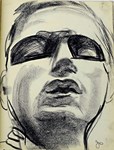
Scene of gatherings of the great, the good and glitterati for four centuries, Weston Hall, ancestral country home of the Sitwell family, drew its biggest audience when 1500 people from 45 countries registered to bid at the contents dispersal sale.
The attraction of the Northants mansion’s contents offered at Dreweatts (25% buyer’s premium) in Newbury on November 16-17 was enhanced by associations with their 20th century occupants – particularly Dame Edith Sitwell (1887-1964).
The poet and critic’s address book with 388 manuscript entries reading like a Who’s Who of leading lights across the arts, politics and aristocracy was the sale’s biggest surprise.
It included Dame Edith’s comments alongside many entries, some complimentary, others less so…“Insolent women with the shrieking children!”…“Blasted Priest”…“Horrible woman magistrate”…“Impertinent Catholic ass”.
Guided at £200-400, it triggered international bids on the phone, online and in the Newbury rooms before selling to a UK phone buyer at £42,000.
Eccentric dresser
Dame Edith, a flamboyantly eccentric dresser, often wore brooches fashioned from eight 19th century gilt copper Qing buckles set with semi-precious stones and jadeite. Reportedly brought home from China by brother Osbert in 1934, they required refurbishing or repairs but went to a UK phone bidder against international rivals at a six-times-estimate £24,000.
Her fashion sense famously extended to hats, most notably the ostrich feather creation fondly mocked by Noel Coward, which she wore for a photo-portrait by Cecil Beaton. Hat, photo and two pairs of gloves tripled the top estimate at £1950.
In her adult years Dame Edith was only a visitor to the house which, though much altered by her ancestors over the centuries, contained material they brought to it since first arriving in 1714.
Built c.1695, it had largely descended down the female line (hence the confusion of names) until Sir George Sitwell moved in in 1924. While he set about writing an exhaustively detailed history of the house and contents, his children made it the choice of bright young things and the arts world for country weekends.
The last Sitwell owners, food critic and broadcaster William and his brother Sir George, continued the tradition with monthly dinners. But by last year the upkeep costs of the manor and 50-acre estate had become impractical and it was sold with an asking price of £4.5m.
While the contents sale was being arranged, two key discoveries were made: a copy of the first atlas printed in Arabic (featured in ATG No 2519) sold at £69,000 and a sketch by Tiepolo of Punchinelli making gnocchi during the Verona carnival. The latter was one of the sale’s rare disappointments, falling well short of the £150,000-200,000 estimate when selling at £100,000.
Collectively the sale statistics made for very positive reading: 99% of the 594 lots sold bringing a premium-inclusive total of £1.47m against albeit modest pre-sale expectations of £500,000.
The fine library and paintings made a significant contribution (see future Antiquarian Books and Art Market) along with the furniture and ceramics.
Impressive bed
Topping the furniture was the 18th century and later ebonised oak four-poster bed. Its size at 8ft 2in long x 5ft 7in wide (2.5 x 1.71m) was impressive as were the equally voluminous hangings. They were woven with floral sprays and ribbon-tied flowers and conforming crewel work by Susanna Jennens (1688-1760), the young widow who arrived in 1714 with her three children – first of the line which became the Sitwells.
A letter to Susanna’s sister and eldest daughter in 1732 about the designs suggests the needlework was a family collaboration.
It had been re-applied to a chocolate silk ground in the 19th century but, with old holes, tears and repairs, it showed all the wear to be expected over centuries.
Valued at £5 in an 18th century inventory, bed and drapes were estimated at £8000-12,000 at Newbury but sold to a UK online buyer at £46,000.
Susanna also did the needlework applied to later furniture at Weston Hall. The distressed floral gros and petit-point needlework applied to the upholstered backs and seats of a pair of early George III mahogany side chairs and to the set of six c.1780 mahogany side chairs, were her work. Respectively estimated at £600-800 and £5000-8000, both sets went to an overseas private buyer at £3500 and £12,000.
The domestically diligent Mrs J also created a pair of painted feather collages depicting a basket of flowers, set in 20½in x 16in (52 x 40cm) mahogany frames. Today they are rare survivors but it seems the craft was popular in the 18th century as both a winter pastime for ladies and a professional undertaking.
The best known name in feather work is the French-born Nicholas Le Normand (d.1736) who operated from a workshop in Putney, London. He is described in 1732 as ‘the ingenious Mr Le Normond’ [sic], who sold his featherwork pictures through a number of Georgian luxury ‘toy’ stores including Mr Bertrand’s Toyshop at Terrace Walk in Bath and the Charing Cross shop of Paul Daniel Chenevix.
These collages went at more than 10 times the top estimate at £6500.
Other 18th century furniture included a c.1695 walnut cabinet-on-chest Susanna inherited from her sister, Lady Anne Probyn.
The 5ft 2in (1.57m) tall cabinet was an attractive item in itself, with a cushion-frieze drawer above a pair of cupboard doors enclosing a fitted interior. An attached bonus was a romantic tale, told in an 18th century handwritten label to one of the doors, describing how Lady Probyn’s diamonds were found in one of the secret drawers.
The cabinet on chest, sans diamonds, went to a UK private at a triple-estimate £8500.
Water Lily Wedgwood
Among the ceramics was a Wedgwood part dinner service, an early example of the Water Lily pattern, given by the great botanist Sir Joseph Banks to Mary Heber, custodian of Weston Hall from 1803 until her death in 1809. Showing all the evidence of regular use over the years, about a third of the 120 pieces had damage but it went to a UK private buyer at £6400.
Less of a surprise was the bidding for a pair of Kangxi blue and white rouleau vases which, according to Sir George Sitwell’s research, had been collected by Arthur Barnardiston (d.1737), husband of Susanna’s daughter Mary. Both the 18in (45cm) tall vases, painted with birds among flowering shrubs, had cracks but tripled the estimate in selling to a UK collector at £16,000.
Miscellaneous marvels
True to country house tradition, odd pieces of family history, childhood playthings and outside lots brought some unexpectedly high prices.
Two Mameluke sabres, 3ft 3in (99cm) and 2ft 8in (3ft 3in (82cm) long, were by repute presented to General Lord Hely-Hutchinson of Alexandria during the 1801 Egypt campaign. The pommel on one was damaged and the other missing but they went to an overseas buyer at £3500 against a £300-500 estimate. The general’s nephew, Peninsular War and Waterloo veteran Colonel Henry Hely-Hutchinson, had married Harriet Heber.
A chequered pine, mahogany and ebony-strung draughts board with 24 pieces was inscribed A Present to Major Hely Hutchinson, by a soldier of the 49th Regiment, when he Commanded that Corps at the Cape of Good Hope, 1822. It was estimated at £200-300 and sold to a private buyer at £3200.
A mid-19th century painted doll’s house mirrored the real-life property boom.
The 4ft 9in (1.45m) high house was, as they say, ‘in need of refurbishment’. There were cracks to the roof and door, wallpaper was curling and there were knocks and scratches throughout.
But it was described as ‘robust’, it was part-furnished and the sitting tenants of five dolls (one minus a head) including a baby in a cot, could be said to be a bonus. Estimated at £400-600, it sold to at £3300.
Outside the mansion, ready to protect it against the blazes which have torn through too many other country houses, stood a painted cast-iron Merryweather and Sons, London, fire pump. Estimated at £300-500, the 3ft 10in (1.16m) wide appliance was a private UK buy at £2400.


